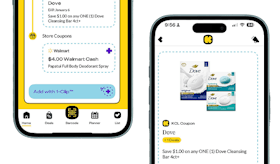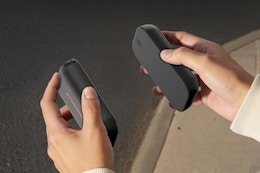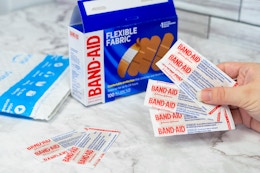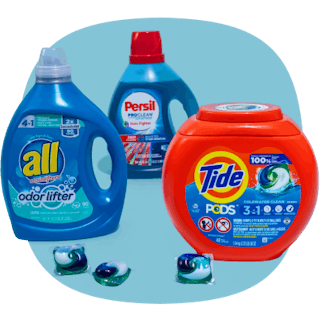Remember at the beginning of the pandemic when we all stopped driving and our auto insurance premiums went down?
Yeah, me, too. But those days are long gone. Working from home, my mileage hasn’t really changed much since 2020, but my premiums have gone up by a whopping $50 per month.
And I’m not alone. Whether the price increases are pure price gouging or legitimate inflation increases (I’m skeptical,) we’re all paying more to drive than we were a few years ago.
That makes it a great time to shop around for auto insurance. But to ensure you’re getting the best price, you have to make sure you’re going about the comparison in the right way. Otherwise, you might think you’re getting a better price, but really, you’re just getting less coverage.
Don’t stress, though. We’re going to teach you how to DIY your car insurance price comparison with some confidence.
Download the KCL app for more smart money tips.
1. Start by finding your ‘dec’ page.

Short for ‘declaration page,’ your dec page is usually the first one or two pages of your policy document. It explicitly outlines each coverage you have (and the price you’re paying for each coverage), line by line.
To find your dec page, you’ll need a copy of your policy. If you’re old school and have a paper copy on hand, you can find it there. But in 2023, most insurers make the most recent version of your policy available online in the ‘Documents’ section of your online account.
2. Look at each line item of your policy so you can compare it to other insurance companies.
Now that you have your dec page, you can go through each coverage item. The bare minimum insurance will vary depending on your state, but here’s an example of a light- to medium-sized six-month policy in Pennsylvania:
- Collision coverage: $274.95 in premiums
- Bodily injury liability: Coverage of up to $50,000 per individual/$100,000 per accident, $59.24 in premiums
- Property damage liability: Coverage of up to $50,000 per accident, $82.73
- Uninsured motorists bodily injury: Coverage of up to $50,000 per individual/$100,000 per accident, $9.57 in premiums
- Underinsured motorists bodily injury: Coverage of up to $50,000 per individual/$100,000 per accident, $20.31 in premiums
- Medical expense benefits: Coverage of up to $10,000 per person, $24 in premiums
- Rental reimbursement: $46.52 in premiums
- Towing and labor: $9.52 in premiums
When you add up all the premiums, that’s $526.84 for a six-month policy.
Bear in mind these should not be used as ‘base’ prices. Your insurance premiums will vary greatly depending on your state and even your locality, and Pennsylvania is known for having some fairly high premiums.
The less populated an area is, the lower the premiums tend to be. The fewer car break-ins there are in your zip code, the lower the premiums tend to be. Your specific vehicle and driving history will also come into play.
But regardless of how much you’re actually paying, having each line item along with coverage amounts will help you ensure you’re comparing apples to apples — or equal coverage across all insurance carriers.
(2A. Decode your dec page if your policy is with State Farm.)

Some insurers make reading your dec page a little trickier. For example, on your State Farm policy, instead of finding line items labeled ‘Collision coverage’ or ‘Property damage liability,’ you’re likely to find a string of numbers that looks like undecipherable .
If your insurer is using codes that mask the actual coverage you’re purchasing, your best bet is to call customer service and ask them to decode it for you. Then you’ll know what you’re paying for each line item so you can compare it to offers from other insurers.
3. Monthly premiums aren’t all you have to think about; don’t forget to factor in deductibles!
Deductibles are the amount you have to pay before insurance pays for everything else. Generally speaking, higher deductibles tend to come with lower premiums. Check your dec page to see what your deductibles are.
Ask yourself: If you were to ever get into an accident, could you actually afford the policy’s deductible?
Be real with yourself and your budget. While it’s great to pay less money in monthly premiums, it’s not going to be worth it if you get into an accident and can’t afford the deductible. Remember that accidents can happen to anyone; even if you’re the safest driver on the planet, you’re not the only one on the road!
If you need to lower your deductible, do that before you do any comparison shopping.
RELATED: 5 Cheap & Easy Ways to Prepare for a Financial Emergency
4. Ask for car insurance discounts.

Now that you’ve found the price for premiums on each line item, it’s time to see if you can squeeze any extra savings out of your insurance provider.
You might be surprised at the number of discounts auto insurers provide! For example, these are all common discounts that can save you money:
- Married person discount
- Age discount (usually applies to young adults, and is generally a higher age for men than it is for women)
- Good student discount (for college students with good grades)
- Automatic payment discount
- Go green discount (for people who opt to receive insurance bills and paperwork electronically)
- Defensive driver discount (a special course is required)
- Low-mileage discount
- Bundle discount (for people who house other policies, like renter’s insurance or valuable personal property insurance, within the same insurance company)
- Low-risk occupation discount (can apply to pilots, artists, scientists, actors, engineers, and teachers, but won’t apply to every insurer)
TIP: Be careful when disclosing your occupation. Some occupations actually incur higher premiums, like doctors, lawyers, judges, real estate brokers, business owners, architects, or social workers. Because these professions tend to require a ridiculous number of hours, they can also lead to ridiculous stress. Insurers count on that stress manifesting behind the wheel.
5. Compare the EXACT same policy across carriers.

Okay, so you know exactly what you’re paying for each line item in your policy. You’ve accounted for deductibles and discounts.
Now it’s time to compare! As you get quotes from different insurers, make sure to ask for the exact same coverage from each insurance provider.
Then, ask them for all the same discounts your current insurer is providing — and see if they offer any others to boot.
As long as you’re sure it’s identical coverage, you can start to compare the total premiums to see who is going to offer you the lowest total price over the course of your policy.
6. Make sure the policy term is the same.
Different insurance providers issue policies of different lengths. For example, one of the reasons Geico’s rates look so low compared to other insurance carriers is that they usually have very short terms of three or four months.
So they might tell you that the policy will only cost you $300 — which seems great compared to the $526.84 you’re currently paying in our example!
But your current policy covers you for six months. If the supposedly ‘cheaper’ policy is $300 for three months, that’s actually $600 for six months. So in all reality, it’s actually more expensive than what you’re already paying.
RELATED: Ways to make money with your car
Should I use online car insurance price comparison tools?

Comparing car insurance prices across insurers might seem like a lot of math — and it is.
Today, there’s no shortage of services that will pull up quotes from a ton of auto insurers all at once that you can easily browse.
But should you use these services?
It depends. First, you want to make sure the service is provided by a reputable company. In order to get an accurate quote, you’re going to have to provide them with some personal information, and you don’t want to give that to just anybody on the internet.
If they are a reputable company, the next thing you want to check is how much autonomy they give you over each coverage line item. You don’t want to compare apples to oranges. If the prices they’re giving you are for identical policies across a number of carriers, have at it. But make sure you see those line items to be sure.
If they’re not identical or you’re not sure, it’s better to run these calculations yourself to make sure you’re truly getting the best price.
Download the KCL app to add and redeem coupons in store






































































































